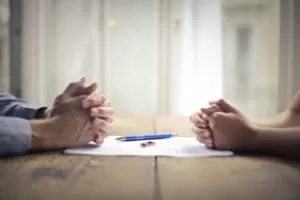The vast majority of people in the United States get married in their mid- to late-twenties, or early thirties. In fact, the average age, nationally, of first-time marriage for women is 27, and 29 for men. Factors such as economics, education, and maturity all play a role in why people tend to marry in this age range.
For some, however, marriage comes much earlier. Many choose to marry in their early twenties, and a few even decide to have their first go at marriage while still in their teens. While this isn’t nearly as common as it used to be, it still works for some individuals. Among these “early-weds,” there are even some who aim to enter the married life under the age of 18. Is it legal to marry in Indiana at 17, 15, or even younger?
Oh-so-close 17
Indiana law provides that, in general, each person seeking to be married must be at least 18 years of age. There are, however, some exceptions. People who are 17 may get married, provided that they receive consent from either their parents, or a guardian who has legal custody over them. This consent must be signed and verified in the presence of the court clerk of the relevant county, meaning that the people giving consent will need to accompany the minor to the clerk’s office. In the case of parental consent, the minor will need the consent of both parents in most instances. However, Indiana law does allow for the consent of only one parent if:
- The consenting parent has court-ordered custody of the minor
- The other parent is deceased
- The other parent has abandoned the minor
- The other parent is physically or mentally incompetent to provide consent, or
- The whereabouts of the other parent are unknown
Even in the instance that one of the above exceptions is met, the one parent granting consent must still explain why they are the only parent required to consent.
What about even younger minors?
Before you begin to think that Indiana laws just hand out marriage licenses to kids of all ages, you should know that courts pull the plug at anything 14 and under. For 15 and 16-year-olds, most marriages are also restricted, but there is an exception: if the people wanting to marry are either expecting a baby, or are already the parents of a child. Under these circumstances, the minors would still need to obtain consent as outlined above, and also take the additional step of obtaining a court order allowing the clerk to issue a marriage license. To do this, the couple would have to file a petition in circuit court, explaining their ages, and their situation as either pregnant or already parenting a child. They would also need to demonstrate that they are the parents of the child in question, and that they have obtained the necessary consent. Upon receipt of the petition, the court will give notice to the parents of the minors, and hold a hearing. Once this is complete, the court can then issue the order to the clerk to issue a license to the minor couple.
What about minors who can’t get parental consent?
Some minors, for a variety of reasons, may not be able to obtain parental consent. They are not completely out of luck, as Indiana law provides a narrow channel through which they might still be able to get married. A minor without parental consent is permitted to petition the court directly, and ask that a marriage license be issued even in the absence of parental consent. This can be done either verbally or in writing. Once a petition is made, the court will look at all of the facts presented, and if it feels that a marriage would be in the best interest of all involved, it will allow the court clerk to issue a marriage license.
All of the above actions are best undertaken with the assistance and counsel of an attorney. Contact us if you have any additional questions or need assistance with a legal matter.
NOTE
This article primarily references Indiana law. Please check the laws of your local jurisdiction if you live in another state.
The articles in this blog are for informational purposes only. No attorney-client relationship is established through the publication of these articles.







